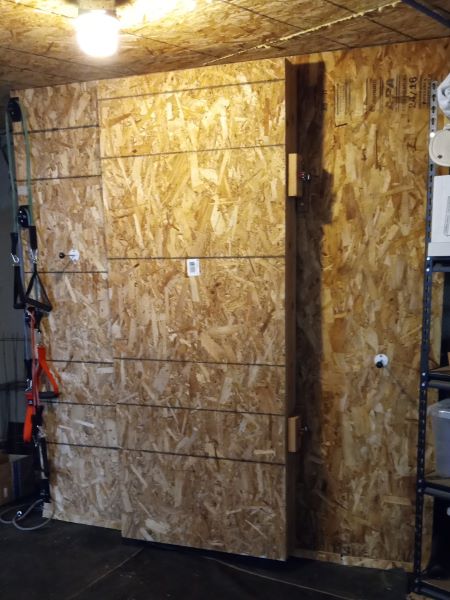"COLD CLOSET" STORAGE
When we first got our garden going here at 9,000’ we thought about how we would store our veggies for the longest term possible. We thought a good old-fashioned root cellar might be in our future and began to think about how we might dig it into a hill. That seemed like a lot of work, and we weren’t sure we’d want to deal with some of the problems that type of root cellar can have. As we researched root cellars and similar kinds of cold storage, we decided to work with what we’ve got: a walk-in crawl space area under the house that is backed by dirt and has plenty of space.
We came up with what we call our “Cold Closet” (CC). There are two sections of the CC: the bottom portion is colder, and is vented to the outside. The top shelf is insulated from the bottom portion, and is vented to the crawl space. The top portion is a bit warmer & drier than the bottom. It holds our winter squash, onions & garlic, which shouldn’t be kept as cold or as humid. The bottom (colder, more humid portion) holds potatoes, carrots, beets, rutabagas, parsnips, leeks, etc.
The three interior CC walls are built with 2 layers of OSB & 2×6’s, with bat insulation between. The fourth side (the back of the CC) backs up to the exterior wall, with dirt on the other side to insulate it from the outdoor temps.
There is a vent near the top of the CC on one side bringing cold air from outside to the bottom of the closet. Another vent at the opposite side, near the top of the lower section, sends the air back to the outside. The lower portion holds a tray of water at the bottom, near the vent, to promote extra humidity.
The incoming vent has a fan installed to bring the colder air in. Tim the Toolman / Computer Geek has programmed the fan with micro-controllers to turn on/off depending on the temperatures outside and inside the CC. We try to keep the CC in the upper 30’s F. So, if the inside of the CC raises above 38°F and the outdoor temperature is colder than that, the fan will turn on. When the CC temperature is below 38°F and it is colder than that outdoors, the fan will turn off, as we don’t want the veggies to get too cold. (Laurie says it sure is nice to have a Tim Toolman around!)
Additionally, the vents are equipped with a means to open & close the vent pipes, which we manually operate to help control the temperature. We monitor the temperatures, and it does very well during the late fall – winter – early spring months, when we have the most veggies to store. If there are veggies to store in it when the outside temps are not cool enough to maintain the required temperature, we freeze some large bottles of water to add to the closet. These need to be replaced and refrozen every couple of days, but the freezer is close by (and powered by our solar power), so this is easily accomplished. In addition to the ice, we keep the vents closed and the fan off, so we don’t bring the warmer outdoor air in.
If any veggies haven’t been eaten by later in spring when the CC gets too warm (or it isn’t worth bothering with the frozen bottles), these veggies go to the refrigerator until eaten.
The Cold Closet system has worked quite well for us, and we have been able to keep many of these vegetables fresh enough to eat from the time they’re harvested (likely October) until the following spring. We have easily been able to keep potatoes fresh enough to use them as seed potatoes in the spring. Onions, too, remain fresh enough until my supply is eaten.
This Cold Closet certainly has been a success for us, and adds to our entire food storage needs6







